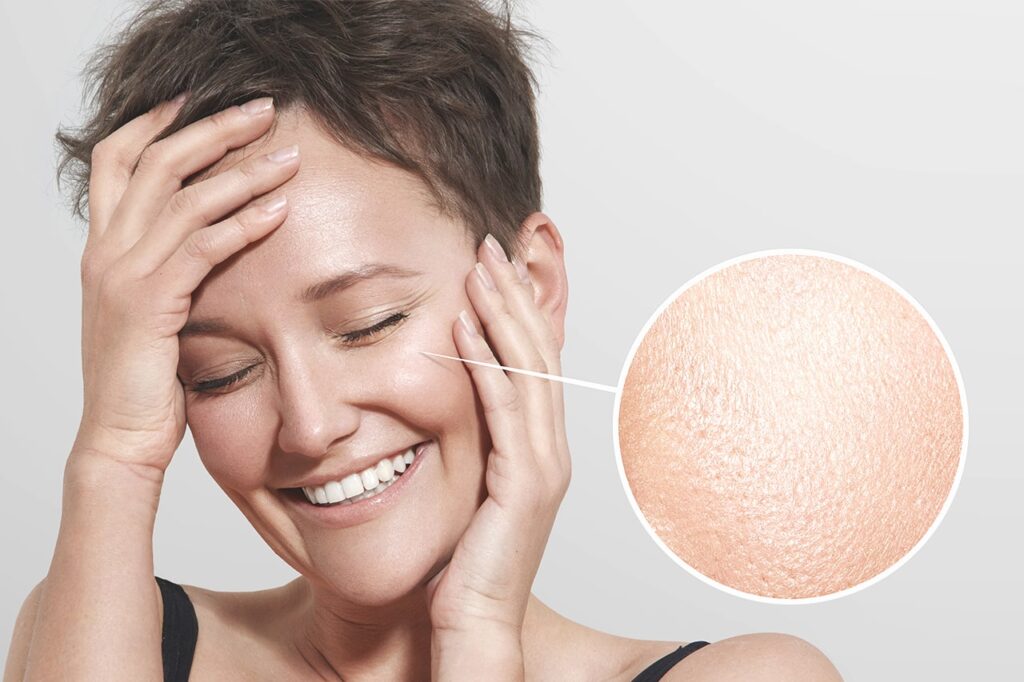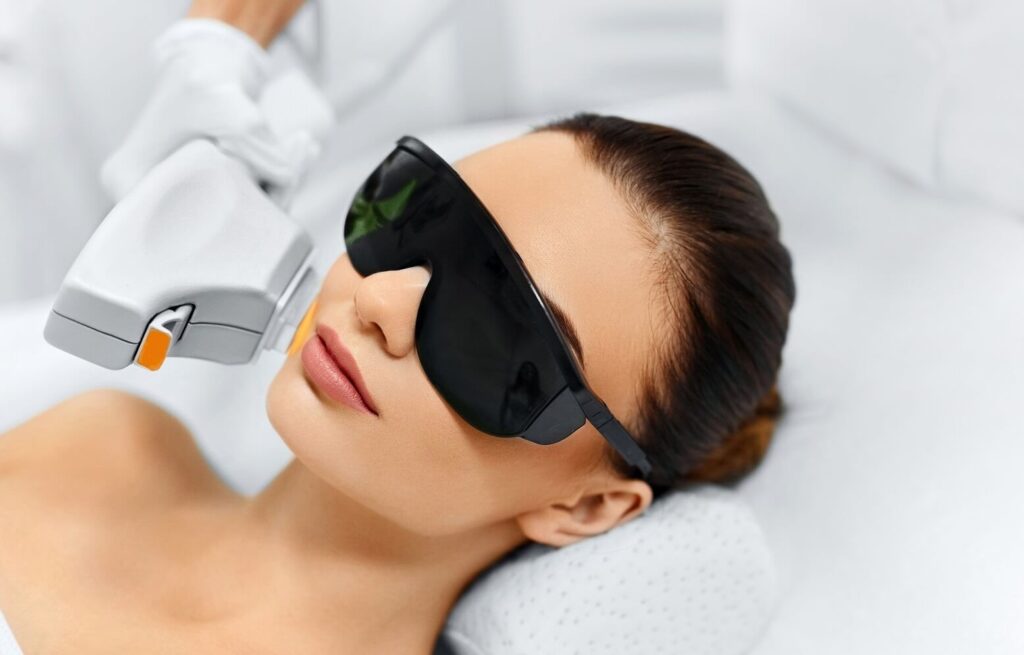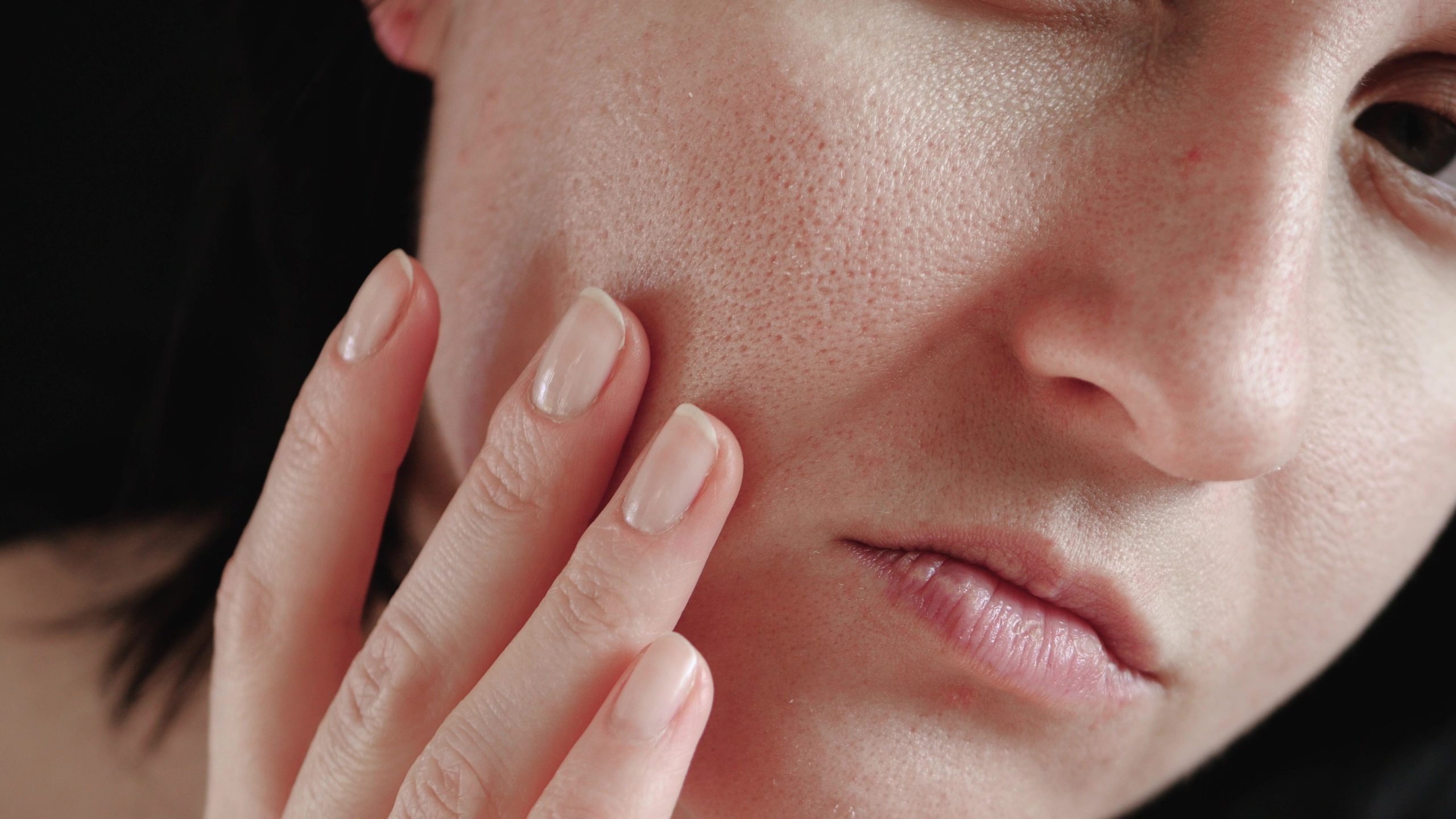Are you tired of seeing those large pores on your face? And even more tired of seeing those flashy influencers on Instagram and Snapchat with their perfectly clear skin with NO pores? Well, fear not, because there’s a treatment and a solution for everything!
What are Pores?
Pores are tiny openings in the skin that serve two important functions:
1. Sebum Production: Pores are connected to sebaceous glands, which are responsible for the production of sebum, an oily material that assists in maintaining the hydration and protection of your skin.
2. Sweat Release: Pores also allow perspiration to reach the surface of your skin, which assists in maintaining a healthy temperature for the body.
There is a possibility that pores, which are necessary for healthy skin, could become clogged with dead skin cells, debris, and oil, resulting in your pore size looking much more obvious.
Pores 101
Those annoyingly enlarged pores on the face are certainly something that we all have witnessed. In situations where cosmetics are being worn, they may even be more noticeable. The question is, why do pores get larger and more significant, and how can you reduce pore size on your face?
Why are my Pores so Big?
Ah, this question is always on our nerves, why are the pores on my cheeks so big? Several factors can contribute to the size and appearance of your pore size, including:
Genetics
Large pores can simply be hereditary. If your parents have big cheek pores, chances are you might too.
Age
As we age, several factors contribute to the loss of skin elasticity can lead to enlarged pores, as the skin’s support structure weakens and pore size becomes more visible.

Hormones
Fluctuations in hormones, especially during puberty, pregnancy, menstruation, and menopause can trigger increased oil production, leading to bigger pores.
Sun Damage
Sun exposure breaks down collagen and elastin, the building blocks of healthy skin, contributing to a loss of firmness and making pores appear larger.
Skin Type
Oily and combination skin types tend to have more noticeable pores due to higher sebum (oil) production.
Skincare Habits
Improper cleansing can lead to clogged pores, which can stretch and appear larger. Harsh scrubbing can also irritate the skin and worsen the appearance of pores.
Are Big Pores Bad?
While open pores can be a cosmetic concern, they’re not inherently bad. Pores are essential for healthy skin, as they allow sebum to reach the surface, keeping your skin lubricated and protected.
How to Reduce Pore Size
The unfortunate reality is that there is no way to reduce your pore size in a technical sense. On the other hand, the good news is that you can make them less noticeable by cultivating a few healthy skincare routines and by avoiding some bad or unnecessary habits.

1. Cleanse Regularly
Regular cleansing will remove dirt, oil, dead skin cells, and other debris from your face that can accumulate on the skin’s surface and clog pores. These clogged pores often appear larger. By cleansing, you prevent this buildup, making pores look smaller. Wash your face 2 to 3 times a day with a gentle cleanser suitable for your skin type. Avoid harsh scrubs and opt for lukewarm water instead of hot water.
2. Exfoliate
AHAs, such as glycolic acid and lactic acid, will work by loosening the bonds between dead skin cells on the surface of your skin. This encourages exfoliation and helps to remove the top layer of dead skin cells.
By removing these dead skin cells, AHAs can help unclogging pores, making them appear smaller. They also promote cell turnover, which can improve the overall texture and tone of the skin.
The most common BHA used in skincare is salicylic acid. Unlike AHAs, which are water-soluble, salicylic acid is oil-soluble. This means it can penetrate deep into the pores, clearing out excess oil, dirt, and debris that can contribute to enlarged pores and acne.
It’s important to note that while these ingredients can be effective, they should be used as part of a balanced skincare routine and in appropriate concentrations to avoid irritation or over-exfoliation.
If you’re pregnant or breastfeeding don’t use AHA and BHA.
3. Moisturize
Dehydrated skin can trigger excess oil production, so it’s important to moisturize daily, even if you have oily skin. Choose a lightweight, non-comedogenic, oil-free moisturizer. When your skin is well-hydrated, it appears plumper and smoother. This reduces the visibility of pores because they seem less indented on a fuller surface.
4. Clay Masks
Clay acts like a magnet, drawing out dirt, oil, and dead skin cells that can clog pores and make them look bigger. By removing these pore-clogging elements, clay masks help refine skin texture, creating a smoother surface where your pores appear less noticeable.
it’s important to remember that clay masks don’t permanently shrink pores. They work best as a regular cleansing treatment to keep pores clear and minimize their visibility. Use them once or twice a week for better results

5. Ice rollers
Ice rollers offer a temporary fix for minimizing pore appearance. The coolness from the roller constricts blood vessels in the skin, which can shrink the appearance of pores. Ice rollers won’t permanently shrink pores, the effect is temporary and wears off as your skin returns to normal temperature, but they can provide a quick fix for a tighter look before an event.
6. Micro Needling
Micro needling, also known as collagen induction therapy, is a kind of cosmetic procedure. It involves using a device with tiny sterile needles to create controlled micro-punctures in the top layer of your skin. Don’t worry these minor injuries will not leave scars but instead trigger your body’s natural healing process. This response involves increased production of collagen and elastin proteins that give skin a youthful appearance, potentially reducing the size of the pore opening.
While it can’t permanently shrink pores, micro needling can improve their appearance by tightening the surrounding skin and potentially regulating oil production.
It’s highly suggested to be performed by a dermatologist or licensed aesthetician and may require multiple sessions for optimal results.

7. Retinol
Retinol is a superstar ingredient when it comes to minimizing pore appearance. Retinol speeds up cell turnover, helping to shed dead skin cells that can clog pores and make them look larger. It stimulates collagen production, which plumps up the skin, and also regulate sebum (oil) production, preventing excess oil from building up.
However, it can be irritating, so start with a low concentration and gradually increase frequency over time.
If you’re pregnant or breastfeeding don’t use Retinol.
8. Sunscreen
UV rays from the sun can damage elastin and collagen, the proteins responsible for keeping skin plump and firm. This loss of elasticity can make pores appear larger and more noticeable. A broad-spectrum SPF 30 or higher at least 2 times daily helps prevent this damage, keeping your skin structure strong and pores less visible.
Sun exposure can also stimulate the skin to produce more oil in an attempt to protect itself. This excess oil can clog pores and make them appear larger. Regular sunscreen use helps regulate oil production, keeping pores clearer and less noticeable.
While sunscreen can’t shrink pores directly, it helps prevent sun damage that contributes to their stretched appearance and keeps oil production in check, resulting in less visible pores.
9. Chemical peels
Chemical peels can be a good option to minimize the appearance of your enlarged pores, but it’s important to understand that they can’t permanently shrink them.
Chemical peels work by using a chemical solution (TCA, AHA, BHA, etc.) to exfoliate the top layer of skin. This can help to remove dead skin cells, oil, and dirt that can clog pores and make them appear larger. Chemical peels can also stimulate collagen production, which can help to plump up the skin and make pores appear smaller.
If you’re pregnant or breastfeeding then avoid chemical peels.
Remember:
1. Chemical peels can make your skin more sensitive to the sun. Using sunscreen with an SPF of 30 or higher after a chemical peel is a must.
2. Peels should only be performed by a dermatologist because only a dermatologist can recommend the right strength for your needs.
3. These peels are not a one-time fix. You may need to have a series of peels to achieve the desired results.

10. Laser treatment
Another method for reducing pore visibility is laser treatment. By targeting certain areas on the face, you can get that smoothened facial look that you desire. Laser treatment works by precise exfoliation, targeting specific parts of your face to get rid of the dead skin cells, helping induce collagen production that reduces the elasticity of the skin, as well as targeting sebaceous glands and reducing oil production which clogs your pores and give your pores an enlarged look in the first place.
Laser procedures should only be performed by a qualified dermatologist or licensed practitioner who can assess which type of facial laser treatment works best for your skin type and sensitivity. There are various types available, the most popular being Fraxel, LaseMD, and Erbium.
As with any medical procedure, there can be side effects like redness, swelling, temporary crusting, potential scarring, or hyperpigmentation.
Like other pore-minimizing methods, laser treatments also have temporary results. Touch-up sessions may be needed to maintain the effects.
If you’re pregnant or breastfeeding then avoid any kind of laser treatment.
Lifestyle Tips:
Diet
Sugary and processed foods can contribute to increased oil production. Go for a balanced diet rich in fruits, vegetables, and whole grains.
Stress
Chronic stress can worsen skin concerns, including pores. Practice stress-relieving activities like yoga or meditation.
Cover it
While you can’t shrink your pores permanently, makeup can help minimize their appearance. Apply a primer to smooth the skin’s surface and choose a non-comedogenic foundation and make-up.
CONCLUSION
Consistency is key! Reducing pore size takes time and dedication to a consistent skincare routine. If you’re concerned about your pore size, consult a dermatologist for personalized advice and treatment options like chemical peels or micro needling or laser treatment.
By understanding the reasons behind enlarged pores and incorporating these tips into your routine, you can achieve smoother, more refined-looking skin. Best of Luck!


Amazing info about on sunscreens
This blog has answered so many questions of mine related to sunscreens and their use.
❣ I am soon going to publish another in depth post about mineral vs physical sunscreens, stay tuned.
It’s awesome to visit this web page and reading the views
of all friends about this piece of writing, while I am also eager
of getting familiarity.
I appreciate you taking the time to read and comment. I’m happy it was informative.
This post is in fact a pleasant one it helps new net visitors, who
are wishing in favor of blogging.